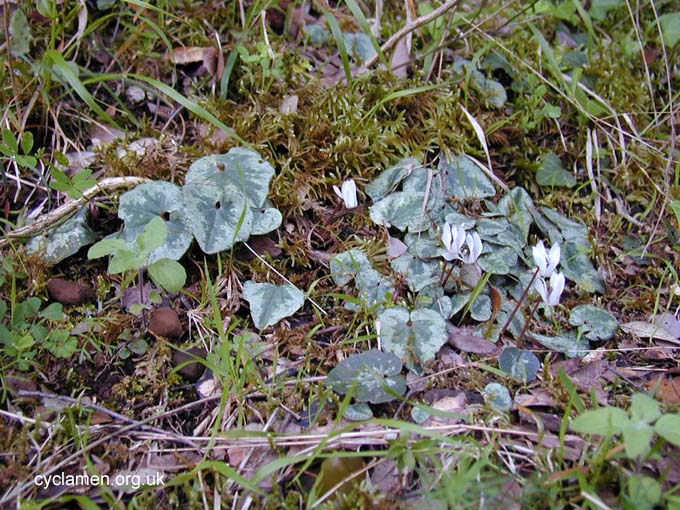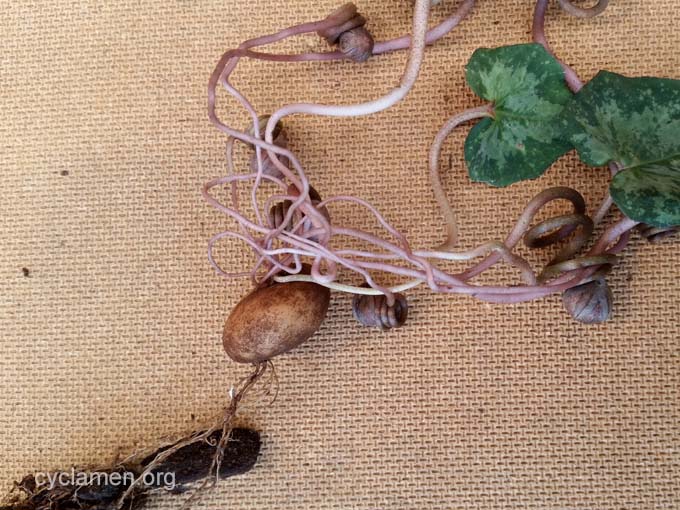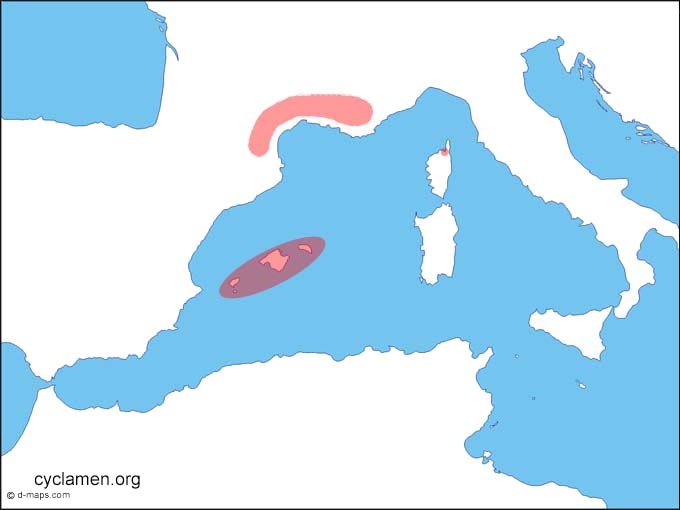Description
Flowers appear in spring, in the wild from February to May, white, occasionally with a faintly pink nose and very fragrant with a sweet scent. The corolla lobes are reflexed, 8-16mm long, 3-5mm wide, with pointed tips, generally 90 degrees twist and no auricles at the base.
Leaves appear late autumn/early winter, fully grown by flowering time, basically heart shaped, with slightly scalloped margins, blue green or grey green ground with grey, silver or white marbling, underside purplish, 2-9cm long, 2-9cm wide.
Tuber
Tuber a compressed sphere, small when mature, up to 3cm diameter, grey-brown, smooth, branching very thin (0.5mm) diameter roots arise from the centre of the underside.
Distribution
Cyclamen balearicum grows on the Balearic Islands of Majorca, Menorca, Ibiza, Cabrera and Dragonera, in the Languedoc-Roussillon region of southern France and on Corsica.
Habitat
Cyclamen balearicum grows in a typically Mediterranean climate with hot dry summers and warm wet winters, with an altitudinal range from sea level to about 1400m. It usually grows on limestone, in shady places on north facing slopes, among evergreen oak, open pinewoods, evergreen scrub or in gorges and rock crevices.
Cultivation
Cyclamen balearicum will withstand overnight frost, which may damage the leaves, but not prolonged freezing and tends to be cultivated as a pot plant in a cool greenhouse in northwest Europe. No cultivars have been named but leaves with brighter patterning, including an all over silver wash, have been selected. C. balearicum is closely related to C. repandum, C. creticum and C. rhodium. In cultivation, C. balearicum has hybridised with C. rhodium ssp peloponnesiacum (C. x saundersiae) and natural hybrids with C. repandum are thought to occur on Corsica, where their ranges overlap.








